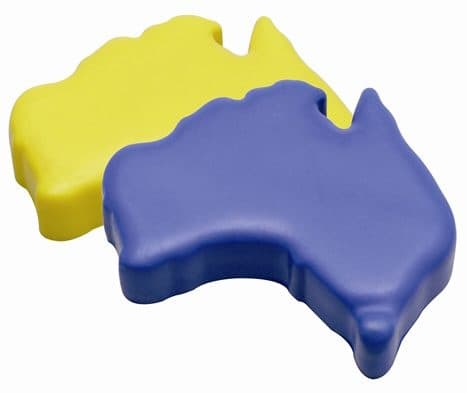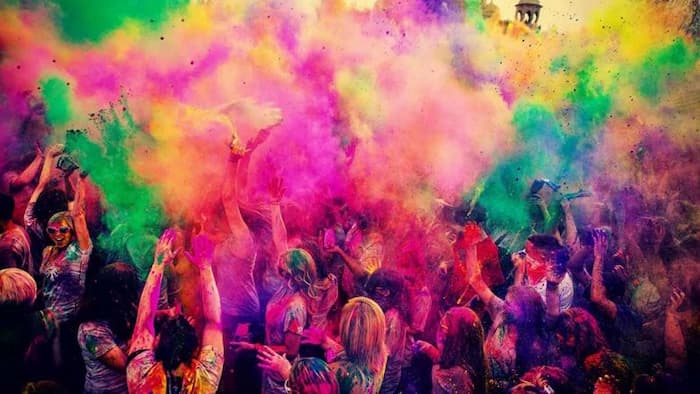
21 November, 2024
Stress Shapes Around the World: A Look at Global Trends & Preferences
In today’s fast-paced world, stress is an omnipresent aspect of life. From the bustling streets of New York to the serene landscapes of New Zealand, everyone seeks ways to manage stress. One popular method is the use of stress shapes. Today we will delve into their global trends and preferences that highlight cultural diversity and universal human needs.
1. United States: Classic and Innovative Designs
In the United States, the market for stress shapes is as diverse as its culture, reflecting a blend of traditional values with a penchant for innovation and personalisation.
Traditional Foam Balls: The classic foam stress ball continues to be a mainstay in the American market. It's simple, effective, and universally recognised as a symbol of stress relief. These balls are often used in corporate environments and are popular giveaways at events and trade shows.
Customised and Quirky Designs: There's a growing trend towards customisation and quirky designs in. This shift mirrors the American spirit of individuality and creativity. Consumers enjoy shapes that are not only functional but also express their personality or interests. This includes everything from animals and plants to abstract shapes.
Technology-Inspired Shapes: Reflecting the tech-centric culture of the U.S., stress shapes inspired by gadgets like smartphones, USB drives, or cloud symbols are becoming popular. These designs resonate particularly well in corporate and tech environments, serving as a subtle nod to the digital age.
Eco-Friendly Materials: With a growing awareness of environmental issues, there's an increasing demand for ones made from sustainable materials. Biodegradable foams and recycled materials are being used to cater to this eco-conscious market. This trend also aligns with corporate social responsibility initiatives of many American companies.
Therapeutic and Sensory Shapes: Beyond mere stress relief, there's a rising interest in stress shapes that offer sensory stimulation or therapeutic benefits, such as those with textured surfaces or that change colour with heat. This development speaks to the broader wellness trend in American society.
2. Japan: Embracing 'Kawaii' Culture
Japan’s stress shapes are deeply influenced by its unique 'kawaii' culture, making them not just functional but also a part of popular culture and collectable art.
Character-Based Designs: The influence of anime and manga is significant in the design. Iconic characters from popular series are transformed into stress relievers, making them highly appealing to fans and collectors.
Miniature Food Replicas: There is a fascinating trend of crafting ones that mimic food items. These miniatures, ranging from sushi rolls to pastries, are made from soft, squishy materials, offering tactile pleasure along with stress relief. They are often so intricately designed that they look almost edible.
Whimsical Animal Shapes: Reflecting the love for all things cute, animal-shaped stress relievers, especially those resembling baby animals or fantasy creatures, are widely popular in Japan. These designs often feature exaggerated features like large eyes and soft colours, enhancing their kawaii appeal.
Collectability and Aesthetic Value: In Japan, they are often seen as collectable items. They are valued not just for their functionality but for their aesthetic appeal and collectability. Limited edition releases and collaborations with famous artists or brands are common, making some stress shapes sought-after items.
Kawaii as a Cultural Phenomenon: The kawaii influence is indicative of a broader cultural phenomenon in Japan, where cuteness is integrated into various aspects of life, from fashion to technology. It's a reflection of a societal inclination towards gentleness, playfulness, and a touch of whimsy.

3. Australia: Practical and Eco-Friendly Options
Australia's approach to stress shapes mirrors its cultural emphasis on practicality, environmental awareness, and a deep-seated appreciation for nature.
Eco-Friendly Materials: Reflecting Australia's strong environmental consciousness, there's a significant preference for ones made from sustainable and biodegradable materials. This includes natural rubbers and recycled materials, aligning with the country's commitment to ecological sustainability.
Practical Designs: Australians tend to prefer ones that are not only functional in stress relief but also practical in other ways. Classic designs like the stress ball are popular, but there's also a trend towards items that can serve multiple purposes, such as desk accessories.
Desk Item Stress Shapes: There's a growing popularity for ones that double as useful desk items. This includes stress-relieving coasters, paperweights, or even pen holders. These products blend functionality with stress relief, reflecting the practical Australian lifestyle.
Connection to Nature: They often draw inspiration from the country's rich natural landscape. Shapes may include native animals or plants, embodying Australians' love and respect for their unique environment.
Subtle and Understated Designs: In line with the Australian preference for simplicity and understatement, they often feature simple, clean designs. They tend to avoid overly bright colours or complex patterns, favouring a more subdued and elegant aesthetic.
4. Europe: Artistic and Historical Themed
In Europe, stress shapes are often imbued with artistic and historical significance, reflecting the continent's rich cultural heritage.
Historical Landmarks: Ones in the form of famous European landmarks are popular. Replicas of the Eiffel Tower, the Colosseum, or Big Ben not only serve as stress relievers but also as keepsakes and reminders of Europe's architectural marvels.
Art-Inspired Designs: Europe's deep artistic roots are reflected in shapes inspired by classic works of art. These may include ones that pay homage to the works of renowned artists like Van Gogh or Michelangelo.
Cultural Significance: Many are designed to reflect the cultural heritage of a particular country or region. This might include designs inspired by traditional patterns, folk art, or national symbols.
Quality and Craftsmanship: There's an emphasis on quality and craftsmanship in Europe. The designs are often more detailed and intricate, mirroring the continent's long history of skilled artisanship and attention to detail.
Tourism and Souvenir Market: These artistic and historical shapes also cater to the tourism market, serving as unique souvenirs for visitors who wish to take a piece of European culture and history back home.

5. India: Vibrant and Cultural Designs
India's approach is deeply intertwined with its rich tapestry of culture, history, and spirituality, resulting in designs that are both vibrant and meaningful.
Bright Colours and Patterns: They often feature the bright, bold colours and intricate patterns that are characteristic of traditional Indian art forms. These vivid designs are not just visually appealing but also reflective of the country's love for colour and detail.
Cultural Significance: Many draw inspiration from elements with deep cultural and spiritual significance. This includes animals like elephants, which symbolise wisdom and good fortune, and peacocks, which are considered auspicious and are a symbol of grace and beauty in Indian culture.
Geometric Designs: Besides animal shapes, geometric shapes featuring traditional Indian motifs and patterns are also popular. These designs often carry symbolic meanings, with each pattern and colour representing different aspects of Indian philosophy and folklore.
Connection to Spirituality: Some incorporate elements related to spirituality and wellness, drawing from the country's long-standing traditions in these areas. This might include shapes inspired by yoga, meditation, or religious symbols.
Handcrafted Options: There is a growing appreciation for handcrafted ones, reflecting the skilled craftsmanship that India is known for. These artisan-made designs provide a personal touch and uniqueness not found in mass-produced items.

6. Africa: Ethical and Handmade Stress Shapes
In Africa, they reflect the continent's diverse cultures and ethical crafting practices, offering unique and meaningful choices to consumers.
Handmade Artistry: They are often handmade by local artisans, showcasing traditional crafting techniques. This approach not only results in unique products but also helps preserve cultural artistry and provide livelihoods in local communities.
Ethical and Sustainable Materials: There's a strong preference for using local, ethically sourced, and sustainable materials. This aligns with the growing global consciousness around ethical production and sustainability.
Cultural and Symbolic Designs: They often feature designs that are culturally and symbolically significant in various African societies. This can include animals that are native to the continent or that hold particular symbolic meanings, such as lions, elephants, or rhinoceroses.
Traditional Patterns: Many are adorned with traditional patterns and motifs that reflect the rich heritage and diversity of the continent's many cultures. These patterns are not just decorative but often tell a story or convey a message.
Inspiration from African Landscapes: The diverse landscapes of Africa, from its vast savannas to lush rainforests, inspire the design of many shapes. These designs serve as a reminder of the continent's natural beauty and ecological diversity.
Conclusion
Stress shapes are more than just tools for stress relief; they are a window into the cultures and values of people around the world. From the kawaii delights of Japan to the ethical creations of Africa, these small objects tell a story of global diversity and the universal human need for stress management. Whether used for relaxation, focus, or simply as a cultural token, they continue to evolve, reflecting the ever-changing tapestry of our global community.
The Stress Balls Only Team




